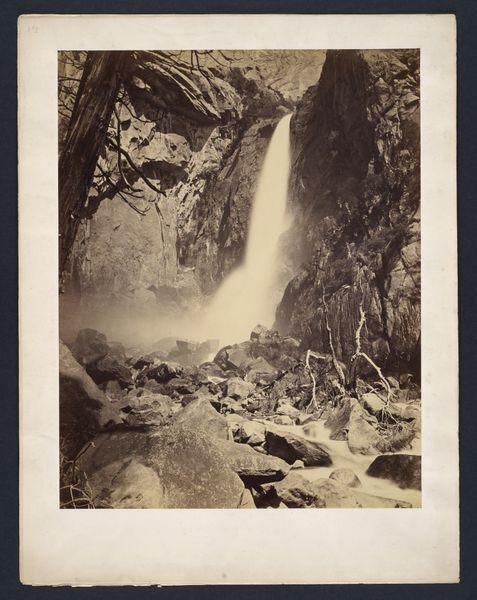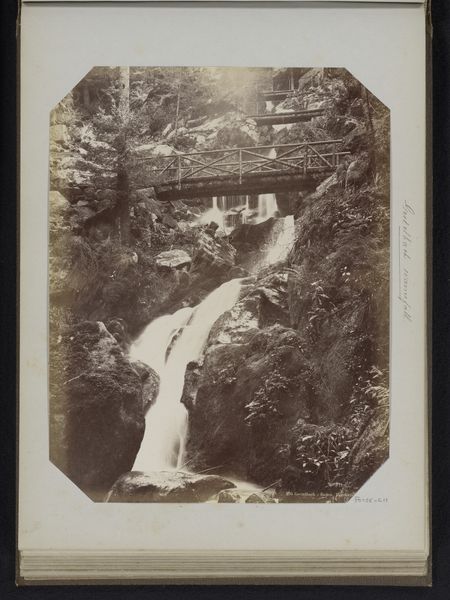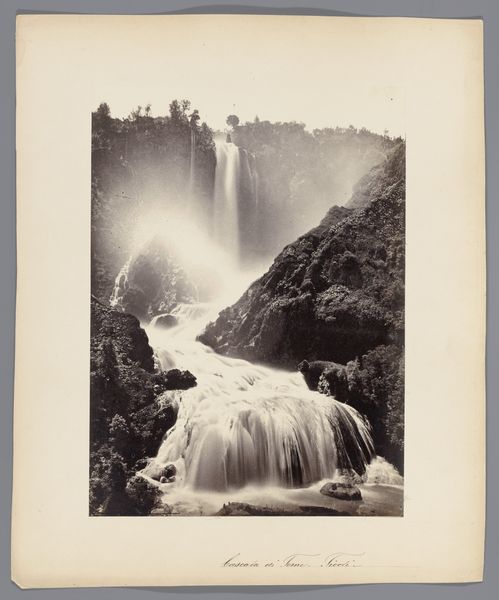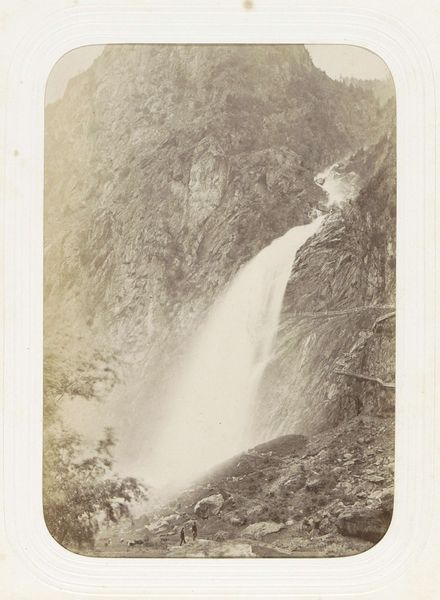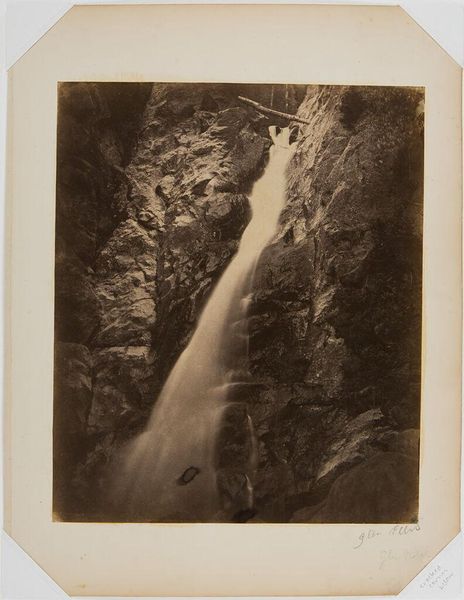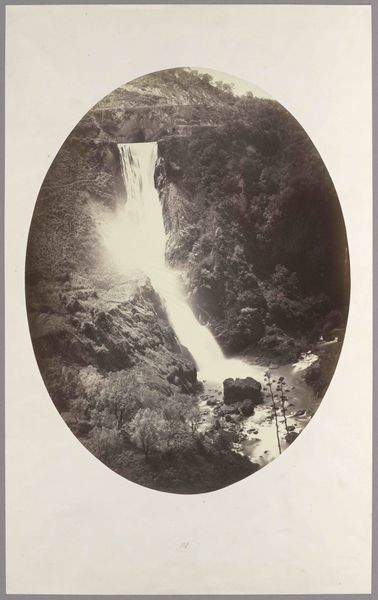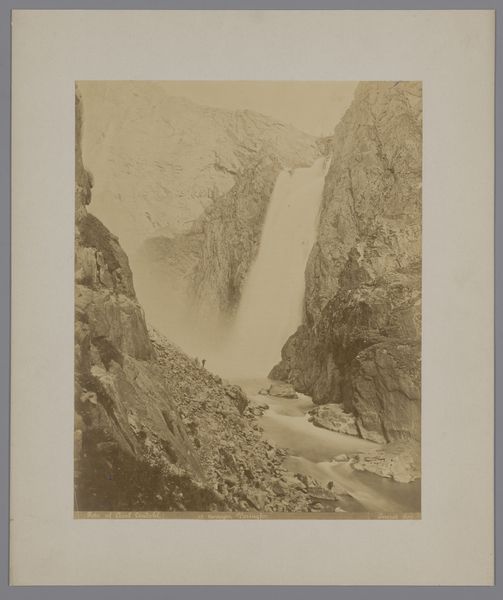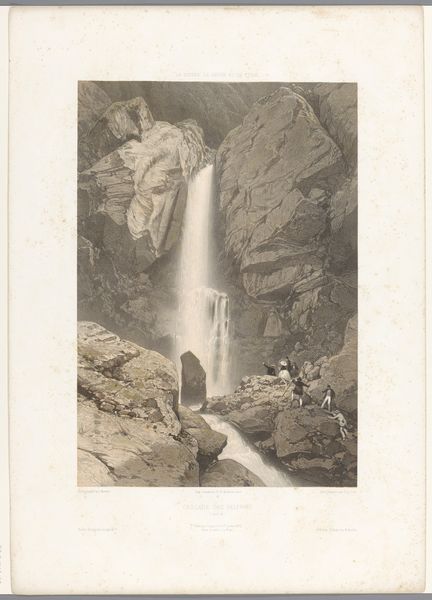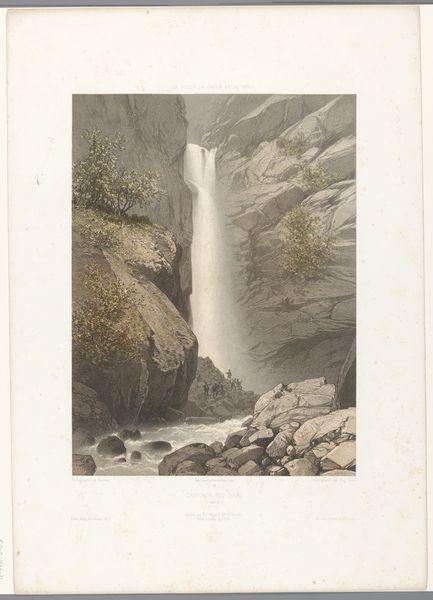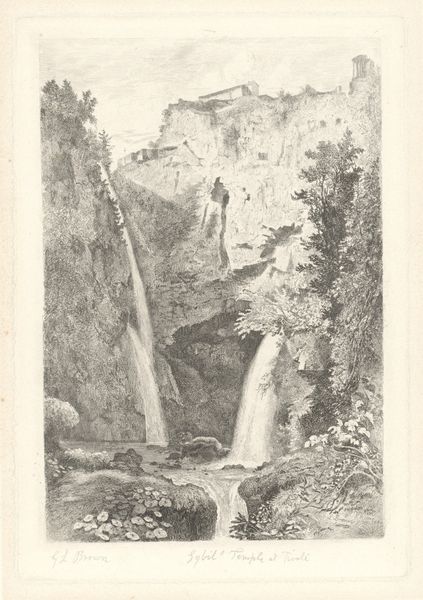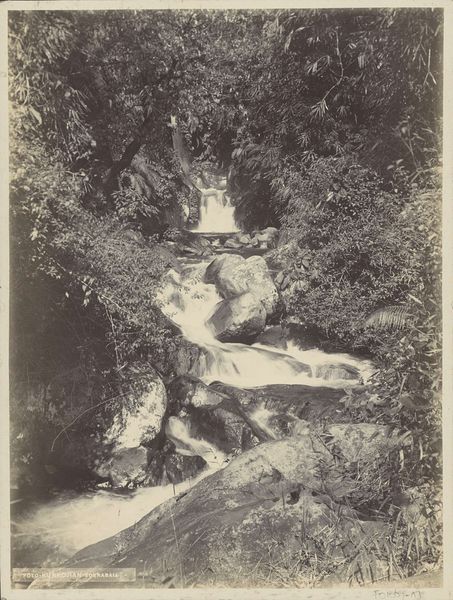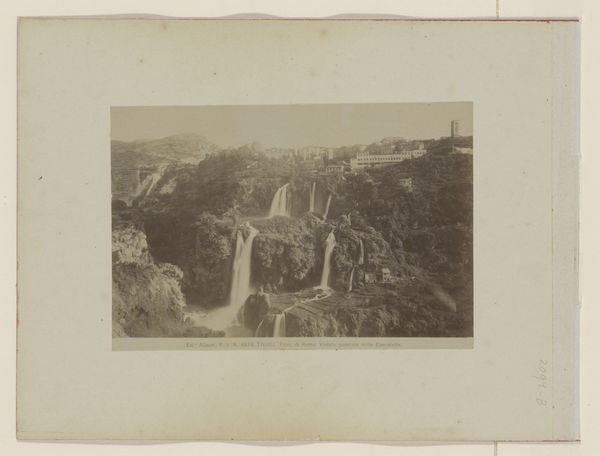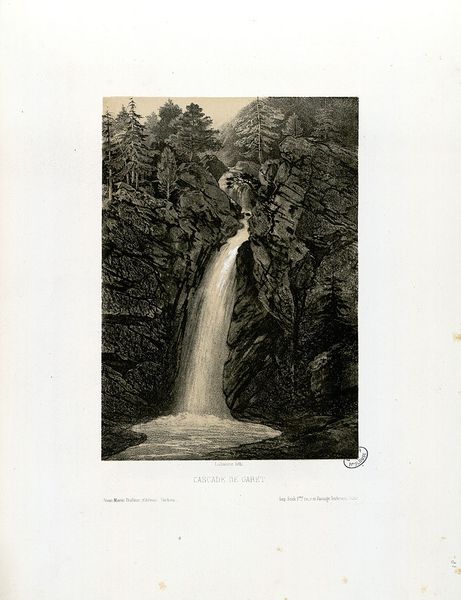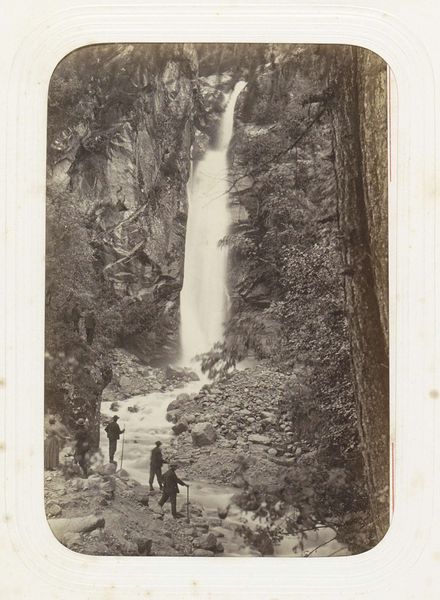
Dimensions: height 284 mm, width 247 mm, height 403 mm, width 322 mm
Copyright: Rijks Museum: Open Domain
Editor: So, here we have "Dungeon Ghyll, Great Langdale Valley, Cumbria, England," a gelatin-silver print photograph by A. Poulsen, likely taken between 1885 and 1910. It depicts a fairly dark and brooding landscape. What jumps out at you in terms of its formal qualities? Curator: Initially, the striking compositional device of the plunging waterfall caught between the two dark masses of rock. The waterfall itself acts as a kind of perspectival vanishing point, drawing the eye deep into the image. Note also the tonal contrast; how does the photographer utilize light and shadow to create depth and mood? Editor: It’s interesting you say that. I notice that, aside from the waterfall, the ladder is the brightest thing in the whole photo. Curator: Precisely. That stark geometric form juxtaposed with the organic chaos of the landscape…It’s a compelling point of intersection. Observe how Poulsen employs a limited tonal range, prioritizing shades of gray to emphasize the materiality and textures within the frame. Does that restricted palette impact your reading of the piece? Editor: It does. I think that the monochrome scheme encourages focus on textural variation, like the rough-hewn rocks compared to the wispy water. Curator: Good. It highlights the relationship between form and surface. Further consider the photographer’s placement of the horizon line. The positioning creates an imposing sense of depth, directing our gaze down into the gorge and prompting an inquiry into nature's structuring elements. Editor: Looking at the work with your perspective in mind has given me a lot to think about, especially the ladder contrasting against all the rock around it. Thanks for pointing that out! Curator: And I appreciate your insights on how the reduced color palette accentuates textures!
Comments
No comments
Be the first to comment and join the conversation on the ultimate creative platform.
